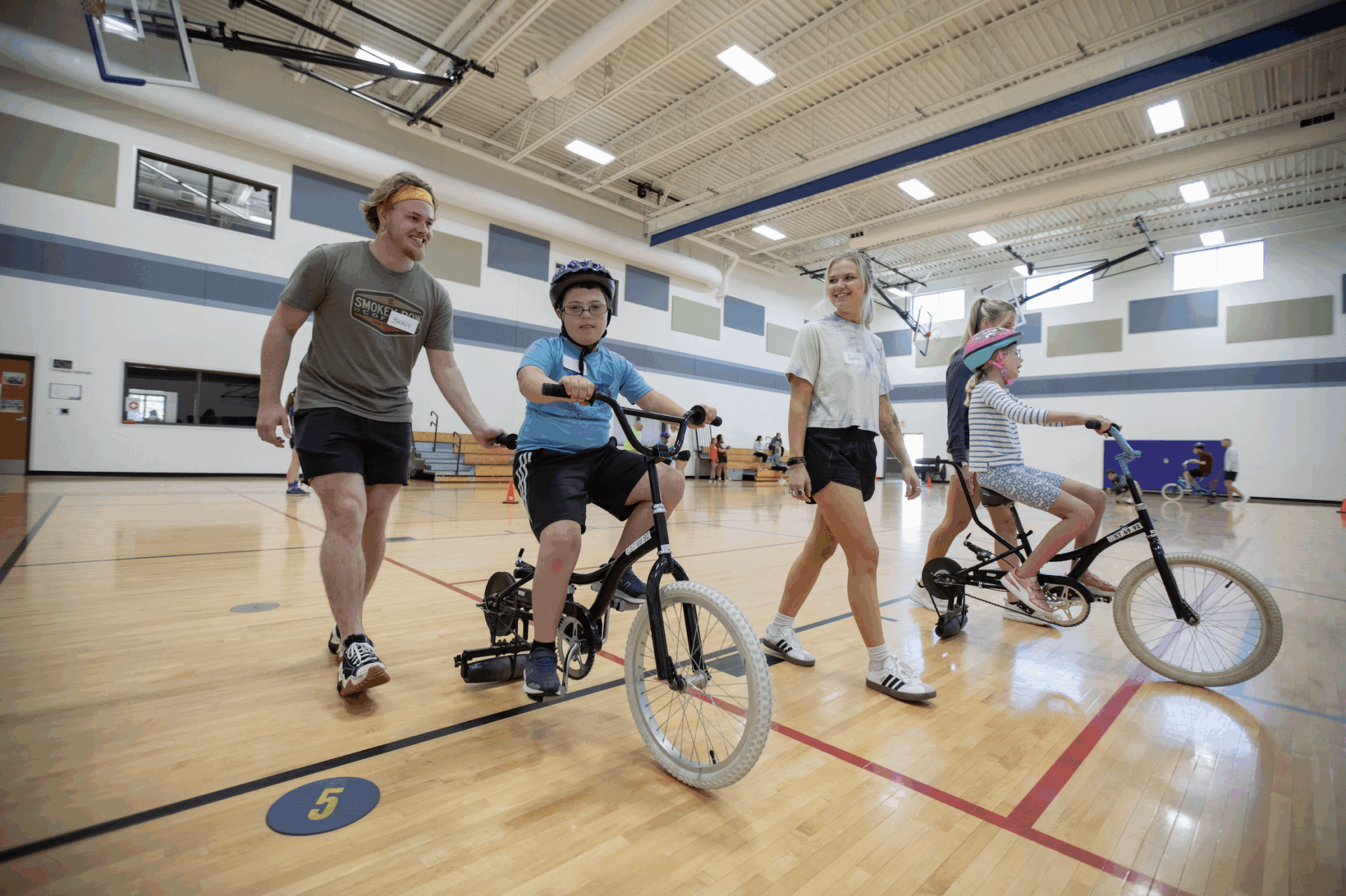Autism is a spectrum disorder. That means it affects individuals differently, depending on where they are on the spectrum. It’s identified by behavioral characteristics that include but are not limited to: delayed learning of language, difficulty communicating or making eye contact; poor motor skills; and narrow, intense interests. In many cases, people with autism have hyper-sensitivity (extremely high) or hypo-sensitivity (extremely low) to stimuli such as bright lights, physical touch, and strong scents.
It may or may not surprise you that autism isn’t all that uncommon. In fact, according to the Centers for Disease Control (C.D.C.), 5.4 million Americans age 18+ are estimated to be diagnosed with Autistic Spectrum Disorder (A.S.D.). That’s 2.2% of the population; about 1 in 45 adults.
You can easily learn how to be autism friendly. Read more to discover 8 autism communication strategies that will help you interact with adults who have autism.
8 Autism Communication Strategies
Communication is key. This is true for life, work, and all kinds of relationships. Autistic people are like everyone else, they just have different ways of communicating. When trying to interact with adults with autism, keep these tips in mind and you’ll be well on your way to building a positive experience.
- Treat them like you would anyone else. Do not assume he/she has limited cognitive abilities. In fact, it’s quite possible they may understand every word you say, but have difficulty responding verbally.
- Use colloquial language. Avoid slang, nuance, and sarcasm as these forms of communication may not be easily understood by someone on the spectrum. For example, instead of saying, “Break a leg,” simply say, “Good luck.”
- Be an active listener. When you listen intently, the person knows you care for and support them. Offer non-verbal cues like nodding and making eye contact. And if you don’t understand what they’re saying, ask questions to clarify.
- Acknowledge their presence. When in a group setting, it’s important not to speak as if the person is not in the room, especially if the person is the topic of conversation. To be autism friendly, include them in the conversation and introduce them if necessary.
- Provide constructive feedback. Some individuals with A.S.D. may unknowingly communicate inappropriately. When you give feedback that is honest, concise, and non-judgmental, you can help them improve their communication and safely navigate future social interactions.
- Be patient. As mentioned above, the autism spectrum refers to a range of disorders. While some individuals may have a very high level of vocabulary, others may have nonverbal autism. Always allow ample time when communicating. They may need a few moments to process what is being communicated.
- Respect Personal Space. One of the major characteristics of autism is sensory overload from stimuli most individuals would find comfortable. Autistic individuals do not enjoy physical gestures such as hugs or pats on the back. Instead, show kindness in other ways such as verbal praise or small gifts.
- Be prepared. If an individual with autism feels panicked and upset, it’s important that their surroundings are calm and peaceful – including you. Raised voices create tension. To be autism friendly, be prepared with a task on hand that they enjoy, such as a puzzle. Discussing unfamiliar situations ahead of time and making use of distractions are two important techniques for learning how to interact with adults with autism.
Being autism friendly extends to businesses as well. Check out our blog post on How to be an Autism Friendly Business.
Are You Autism Friendly?
Using effective communication to build positive experiences and interact with adults with autism is a great thing. You can excel beyond that, too, when you gather your love and acceptance of individuals with A.S.D. and focus your efforts on helping them break down barriers.
- Listen. The most important thing you can do to become an ally for people with autism is to listen. By listening, you gain insight about their individual experiences.
- Learn. To be respectful, it’s critical to learn about people’s preferences and make accommodations whenever possible. For instance, knowing to dim the lights or quiet noise in an environment could go a long way in ensuring someone is more comfortable.
- Love. This last one is simple. Love and accept individuals with A.S.D.. Love them enough to learn how they like to communicate on an individual basis. Love them by speaking up for them, including them; and by teaching others acceptance, not awareness.
Advocate with Covey
For over sixty years, Covey has helped clients and their families reach their highest potential. Serving the Oshkosh and Appleton communities, we are passionate about empowering individuals to achieve greater independence. Through actively volunteering, virtual and in-person classes, creative activities, and more, Covey clients discover new passions, develop social skills, and build lifelong friendships.
You can help advocate for adults with A.S.D. and other individuals with disabilities when you volunteer at Covey. Whether you want to share your unique talents, bring compassion, or strengthen connections with the community, we are grateful for your advocacy. To learn more about volunteering with Covey, visit our how to help page.

